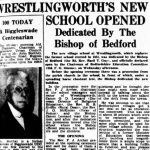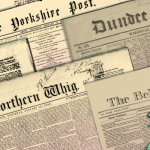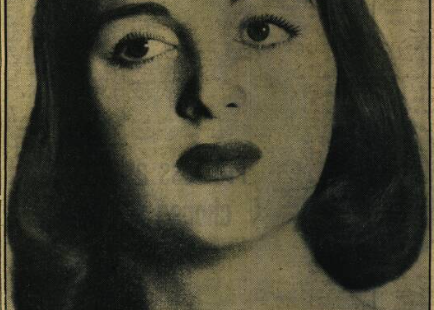
In this week’s episode of Who Do You Think You Are?, Noel Clarke knew his family tree would bring him directly to the Caribbean island of Trinidad. Both his mother and father had emigrated to England from the island. But in telling their story, he discovered a rich, and sometimes difficult, heritage which connected him deeply to several of the islands of the Caribbean. His family story reflects the experience of many Trinidadians, and the events which affected their lives can be discovered in historic newspapers.

Life in the Caribbean has been marked by the ebb and flow of people from island to island and across the globe. In all of its forms, the migration of people appears to have been economic in origin. Noel’s mother emigrated to the UK as a young woman to work as a nurse, a programme we discovered that was in operation from at least the 1940s. Noel’s grandmother was obliged to leave her daughters in Trinidad while she sought work in New York after being widowed. And previous generations of the family had moved from St Vincent to Trinidad to follow work in sugar plantations and the oil fields. Even the bread fruit which Noel’s family grew in their garden was a migrant, brought to the country as a food crop in the late eighteenth century.
The greatest displacement of population associated with the islands was, of course, the transportation of men and women from Africa as slaves in the late eighteenth and early nineteenth century. Noel’s direct connection to the slave trade is through his five times great-grandmother Genevieve and her son Glasgow Bedeau. Descended from men and women sold into slavery in present-day Ghana, the family was at the mercy of one of the most notorious agents in Carriacou. Oral testimony reveals that John Dallas was cruel and that he subjected men and women under his care to physical torture.
The model of all slave islands seemed to me to be Carriacou… They generally commence, at five o’clock [a.m.] that they may finish earlier, and often complete their task by eleven or twelve, almost always by two. They then have the rest of the day entirely to themselves. It generally happens that, if one or two are weaker than the rest, and have not finished their task the same time with them, the whole gang will remain and complete the work of those that have been behindhand; this, however, is not always the case.

The issue of slavery is the subject of hundreds of thousands of articles in the newspapers. But it is the description of Carriacou that is perhaps one of the most arresting, and reminds us to be critical of all historical sources. An account published in 1833 gives little insight into the harsh reality of outdoor working in blazing sunshine. There was, however, balance in reporting, and the article that followed gave an insight into the cruelty of the system.
Facts are stubborn things and although many years have rolled over my head since I left the West Indies, I have not yet forgotten what the system of slavery was in 1800, 1804, and 1806, (in Barbadoes and Antigua.) The first exhibition of the kind which met my eye few days after landing in Antigua, was a huge slave driver flogging most unmercifully an old decrepit female negro, who appeared bowed down with misery and hard labour. I know not what her offence was, but she was one gang, as they are termed, of negroes, of different sexes and ages, working with spades under a mid-day tropical sun. A brother-officer, who was with me on a shooting excursion, felt astonished and indignant at this unnatural and inhuman treatment as myself, and our first impulse was to threaten to shoot the driver if he did not desist. I am not ashamed to say that, after drawing off to such a distance that our small shot could not seriously injure the vagabond, we peppered his legs pretty handsomely.
Newspapers show us history as it happened. They also reveal the opinions which were prevalent about difficult subjects. Exploring a range of newspapers can help you build up a picture, not just of the facts, but of how people felt about a particular topic.
Register now and view 3 pages for FREE






